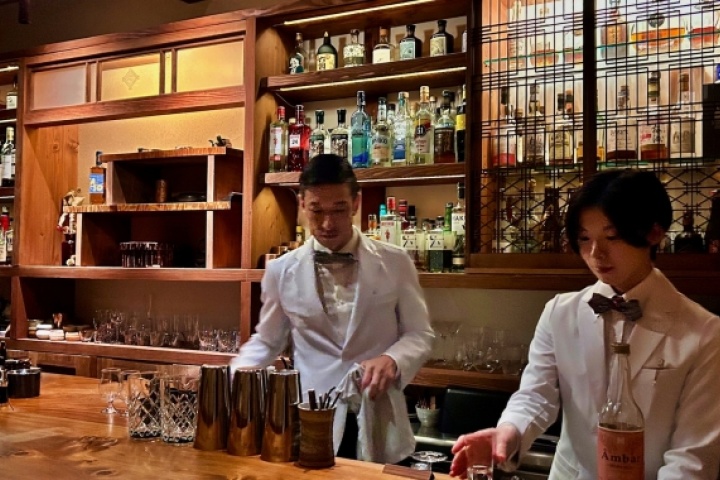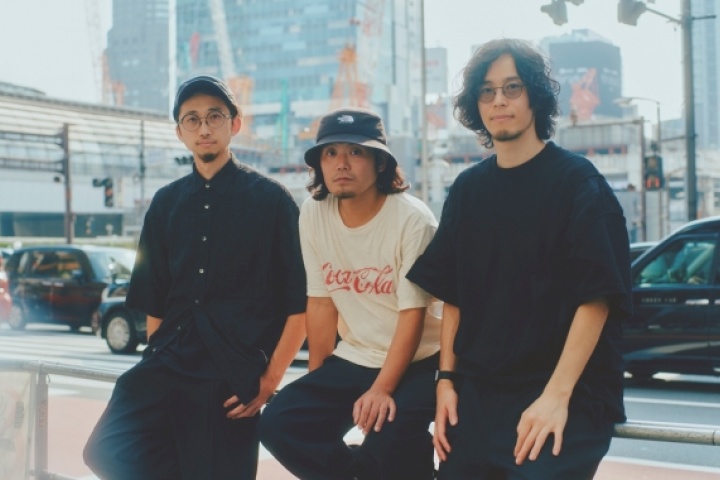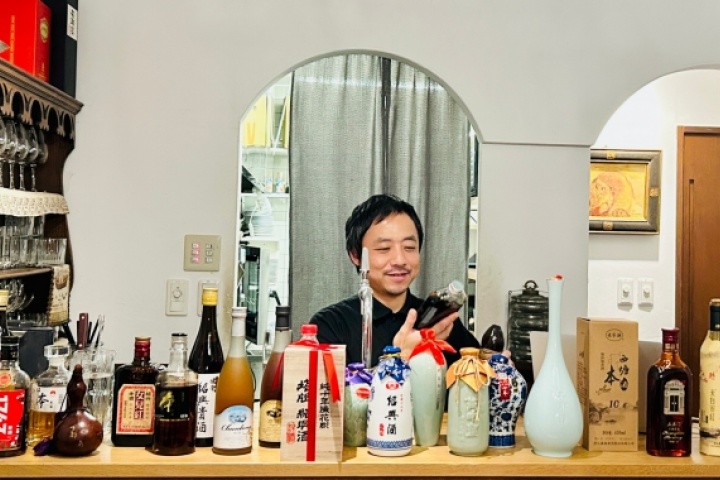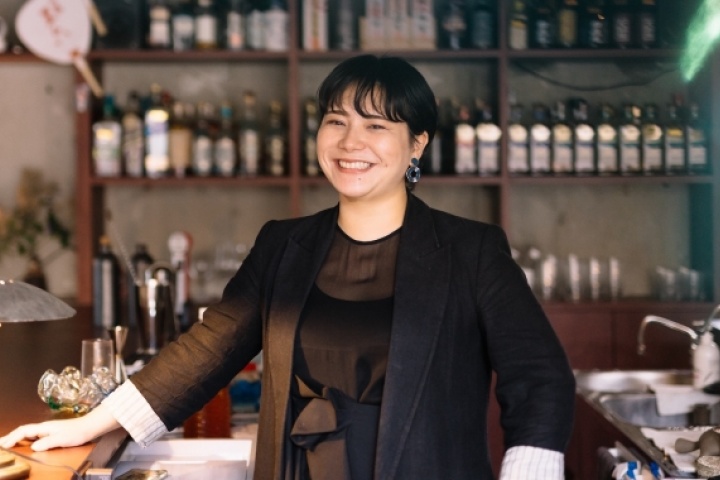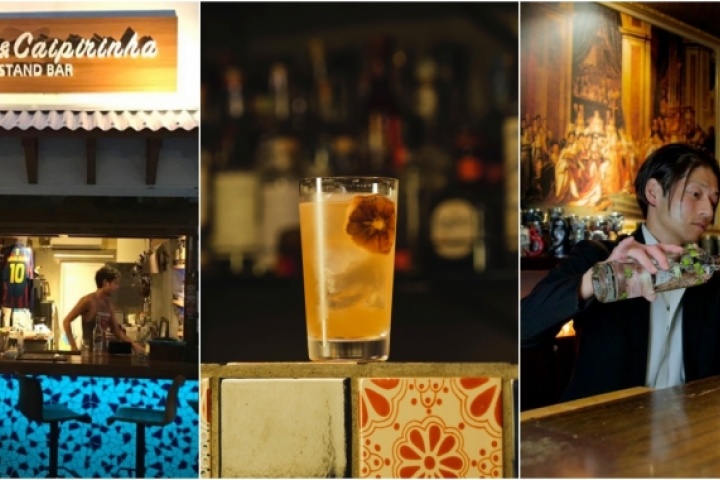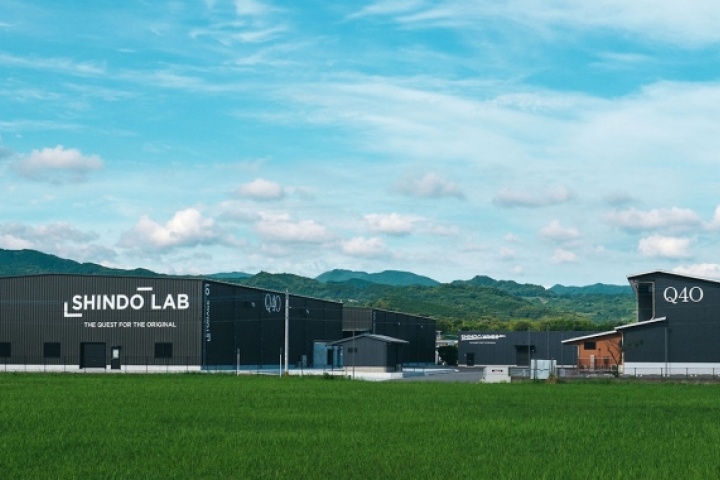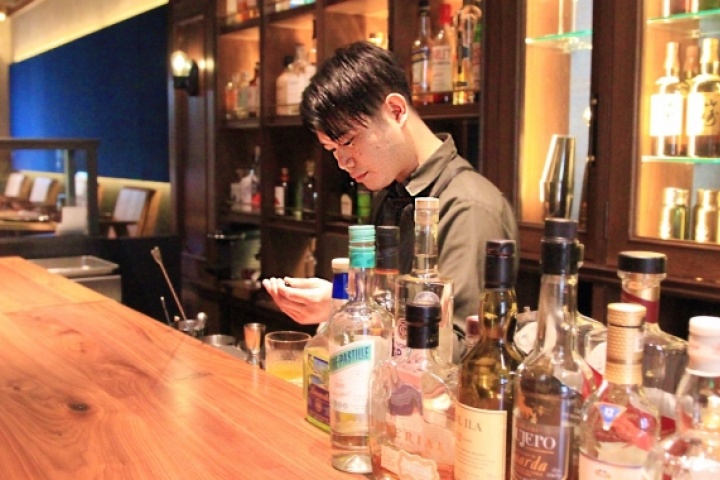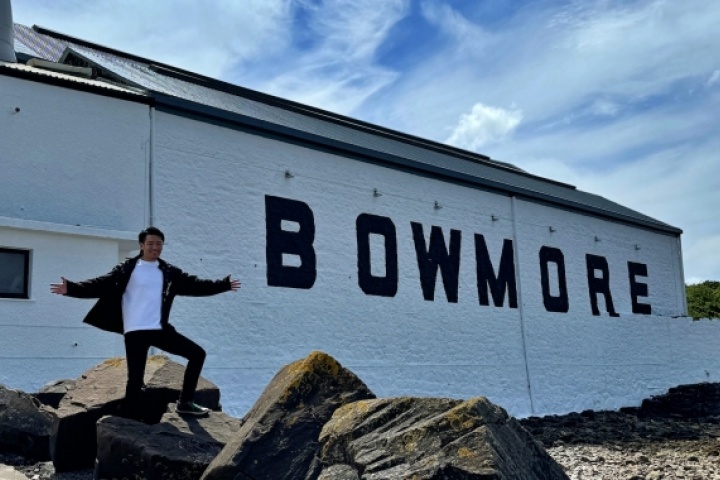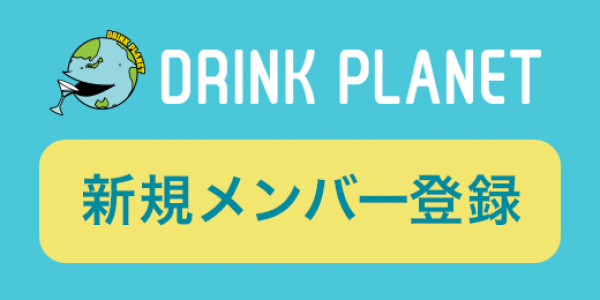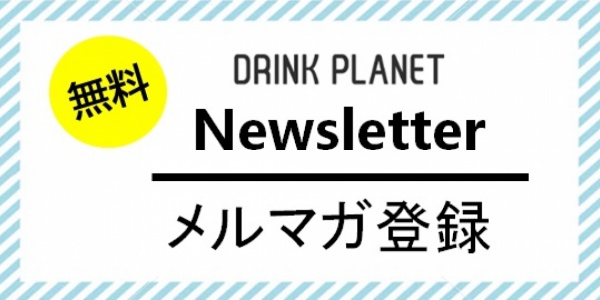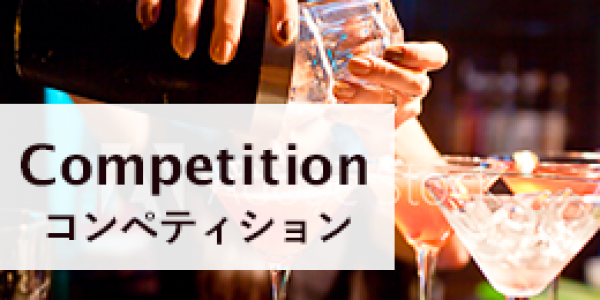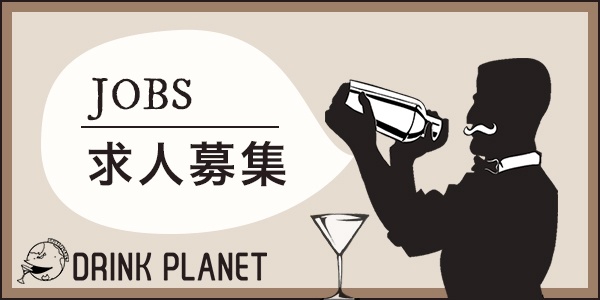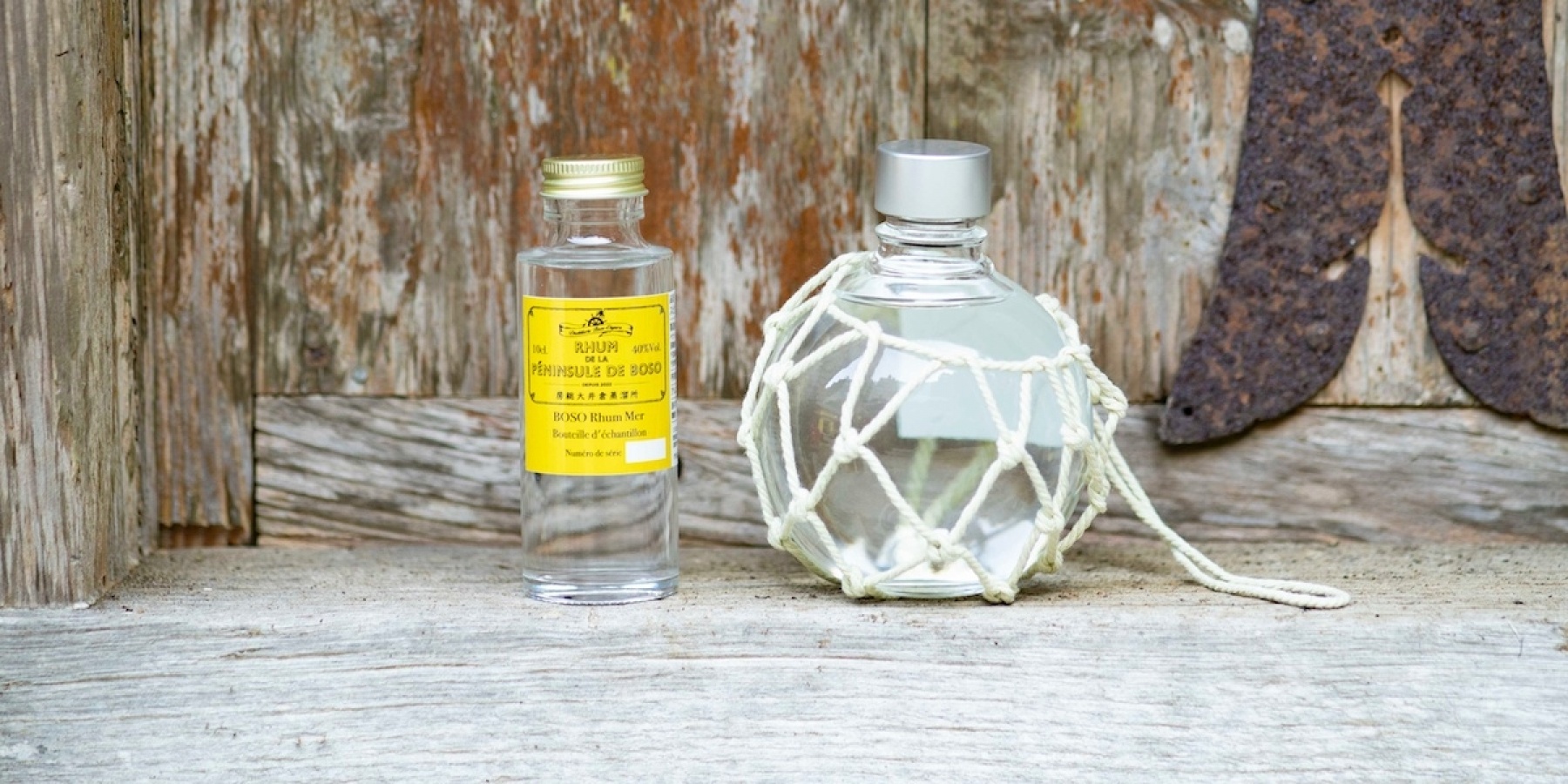
PICK UP
The closest rum distillery to the city centre.
Distilling finally begins!
< Part 1>
#Pick up
Aoki Taisei/青木大成 from「Boso Oikura Distillery」
writer:Ryoko kuraishi 撮影:Midori Yamashita
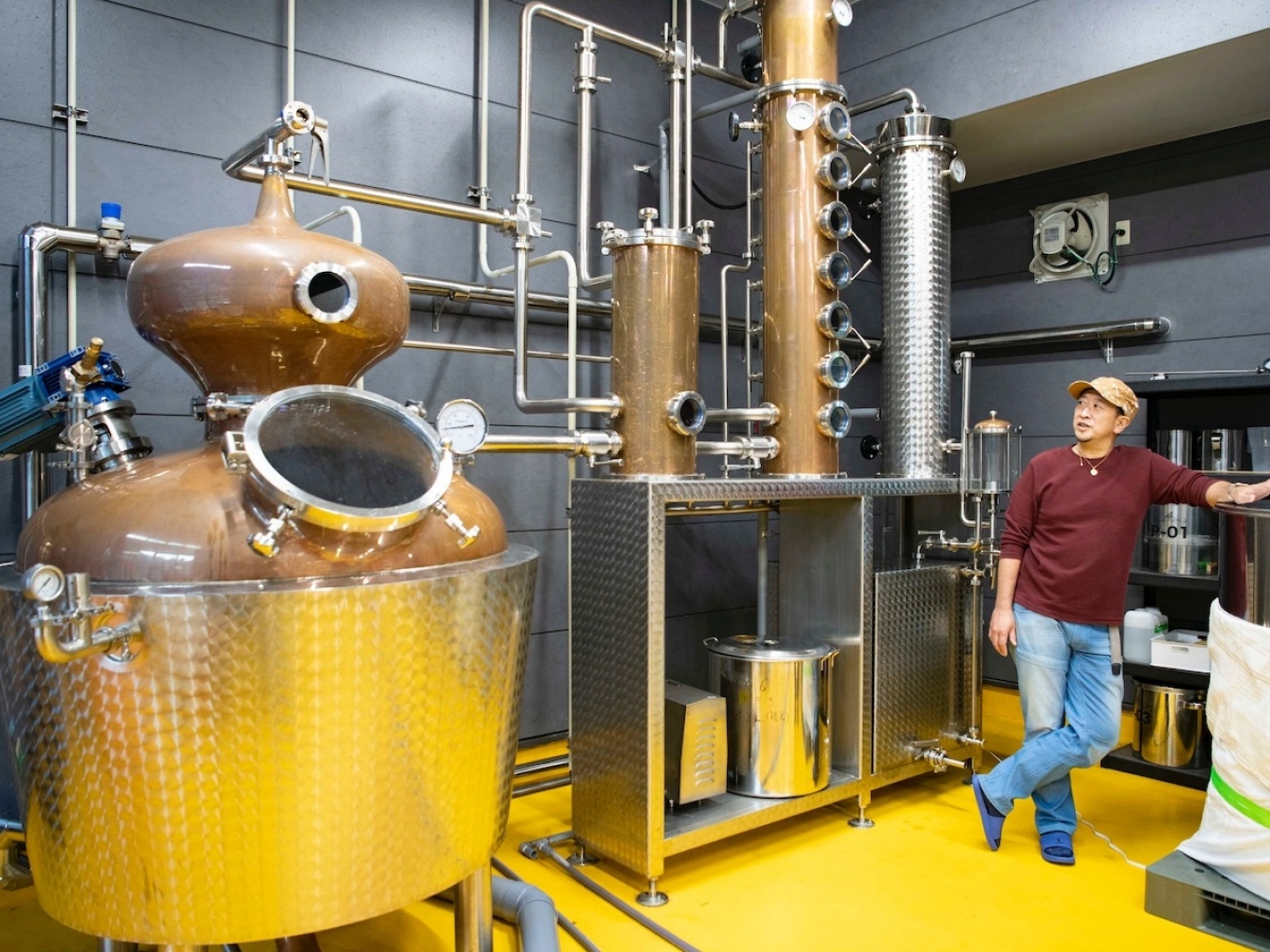
The hybrid copper distiller from Kotobuki-Teklex and its representative, Mr Taisei Aoki.The main image shows Prologue, a white rum full of originality, batched with several types of original spirits.Finally released next spring!
Sugarcane cultivation in Minami Boso began after the war.
The Boso Oikura Distillery, located just over two hours from central Tokyo, is a distillery that has attracted attention from bartenders for its concept of producing mainly agricole rum, which only accounts for about 10% of the world's rum production.
We visited the rum distillery, which has finally started production.
'Taking advantage of the mild climate along the coast of Minami Boso, each household grew sugarcane for their own consumption during the post-war food shortage,' says Taisei Aoki, representative of the Boso Oikura Distillery.
'It seems that it was grown until the 1950s.
When I was in primary school, I remember some of my classmates bringing home-grown sugarcane.
The first time I tasted sugarcane, it was kind of weirdly sweet, and to be honest, I thought I didn't like it."
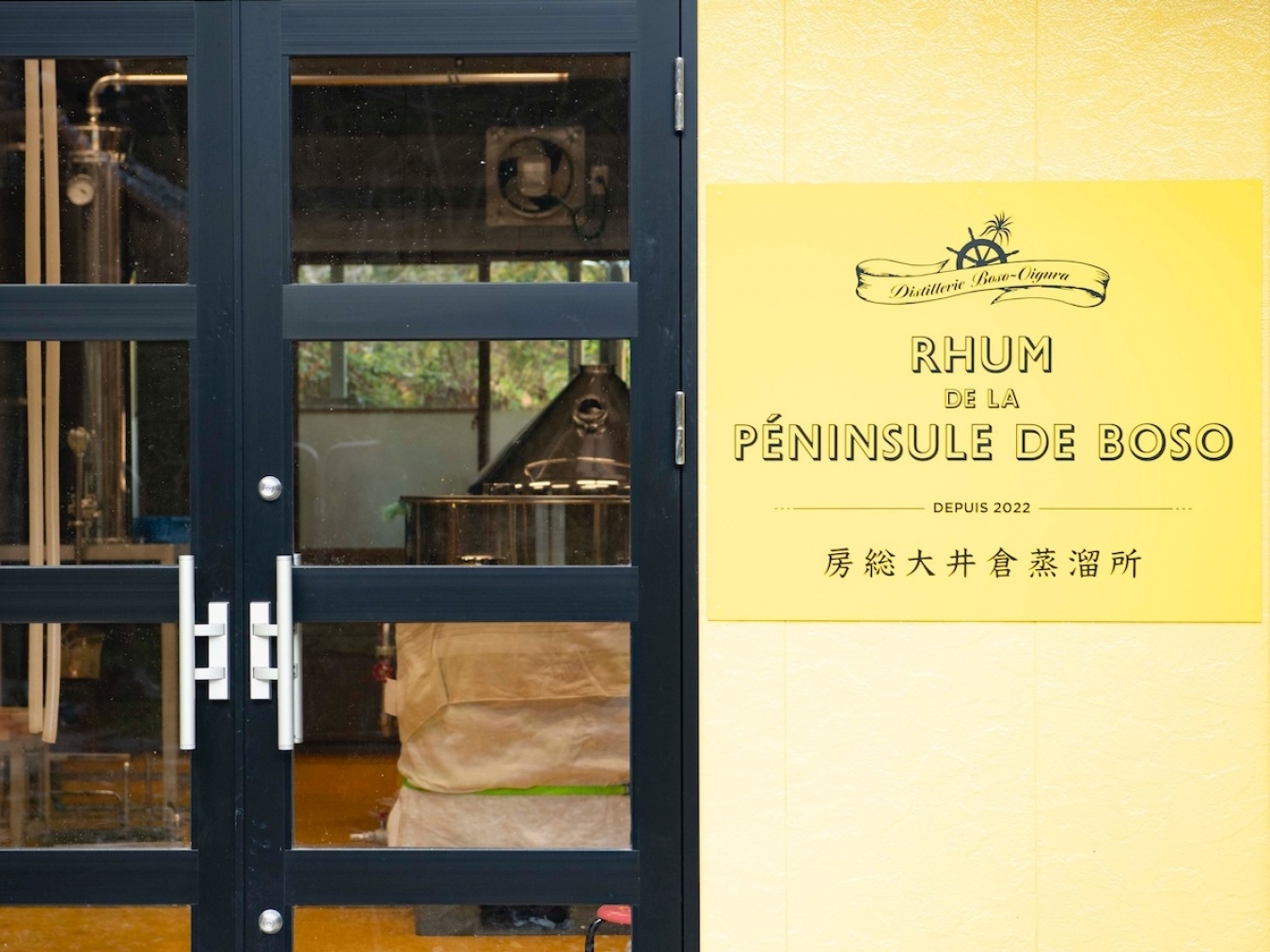
As the name "RHUM" suggests, the aim is to create rum from the Caribbean islands of the French overseas departments.
Aoki-san's interest in agricole rum came from his experience working in a bar in Tokyo.
Later, when he took over his family's sushi restaurant and set up a bar counter inside, he told customers and staff that it might be interesting to make glycol rum from local sugarcane, and the excitement was great, especially among elderly locals who knew how sugarcane was grown at the time.The idea of making glycol rum from sugarcane in the area was very popular among the customers and staff.
'So, with the help of some elderly people who wanted to revive the abandoned land, we started small-scale sugarcane cultivation in 2019.
Bartenders and bar staff from Tokyo came and helped us work the fields.I was grateful."
While making sugar cane syrup (Sugar Cane Honey), collecting data on sugar cane and planning for rum production, he unexpectedly won the Chiba Entrepreneur of the Year Award at the CHIBA Business Contest 2020.Rum production became a reality.
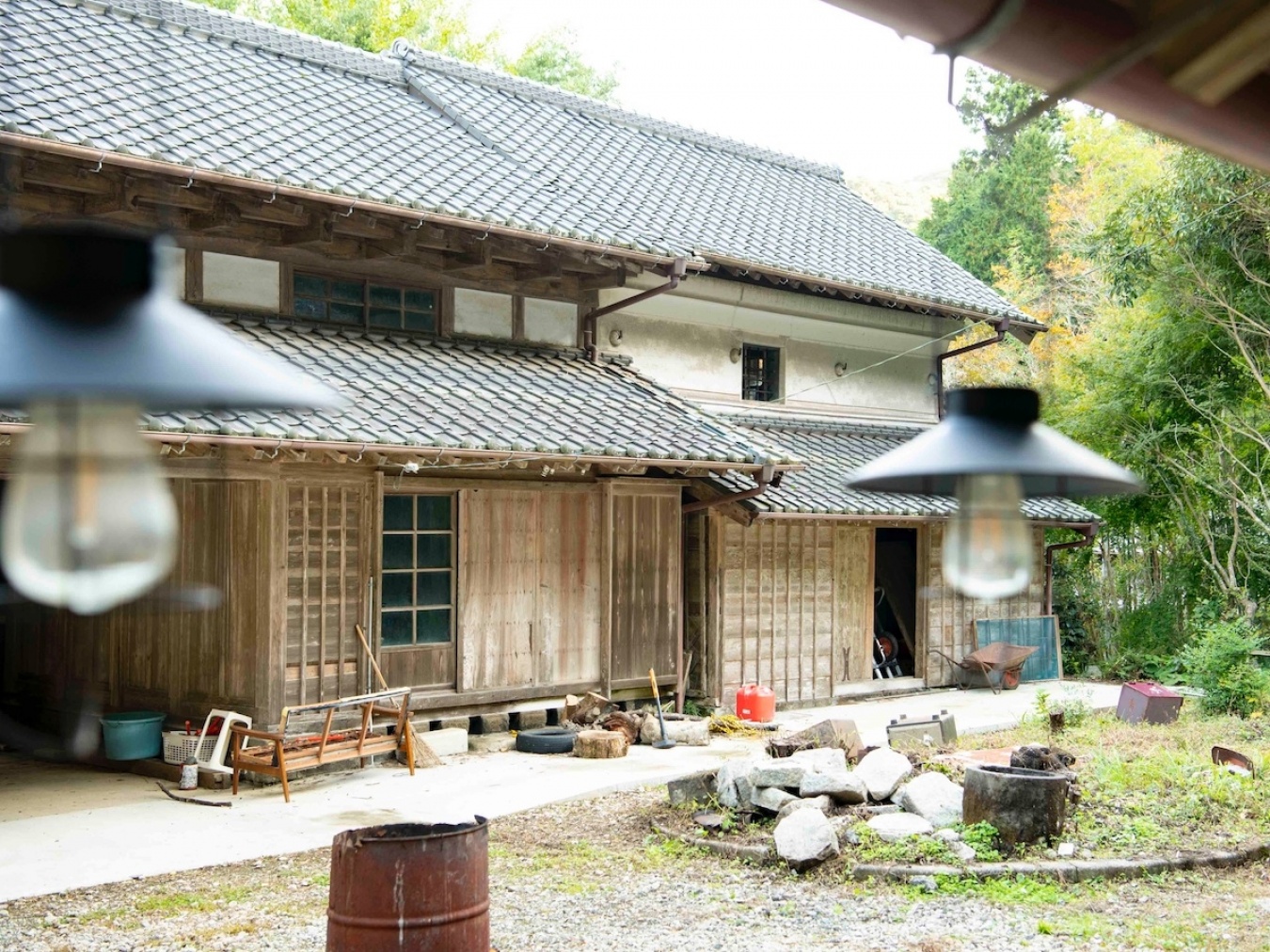
The distillery is located on a 700 tsubo site with a long gate, a warehouse and a main building, which has been extended and renovated to become a distillery.In the future, the second floor of the gate will be used as a tasting space and the warehouse as a maturing room.
Making rum like a winery.
This summer, a distillery in a renovated old house in Chikura, Minami Boso, was completed, and a licence was obtained to produce spirits, and the company began working towards the production of agricole rum.
The rum here is characterised by a heaviness reminiscent of rums from abroad.
'Our rum is aimed at the "RHUM" (French word) of the Caribbean islands in the French overseas departments, and is modelled on French wine and brandy making.
The quality of the wine is always robust and heavy.
We will keep this quality and produce three types of rum for the first release next spring: Agricole, High Test Molasses and Industrial as a popular version.
While our goal is to produce Agricole and High Test Molasses, which are grown on our own farm, we decided that if we are going to make rum, we would also like to try our own unique taste in Industrial.
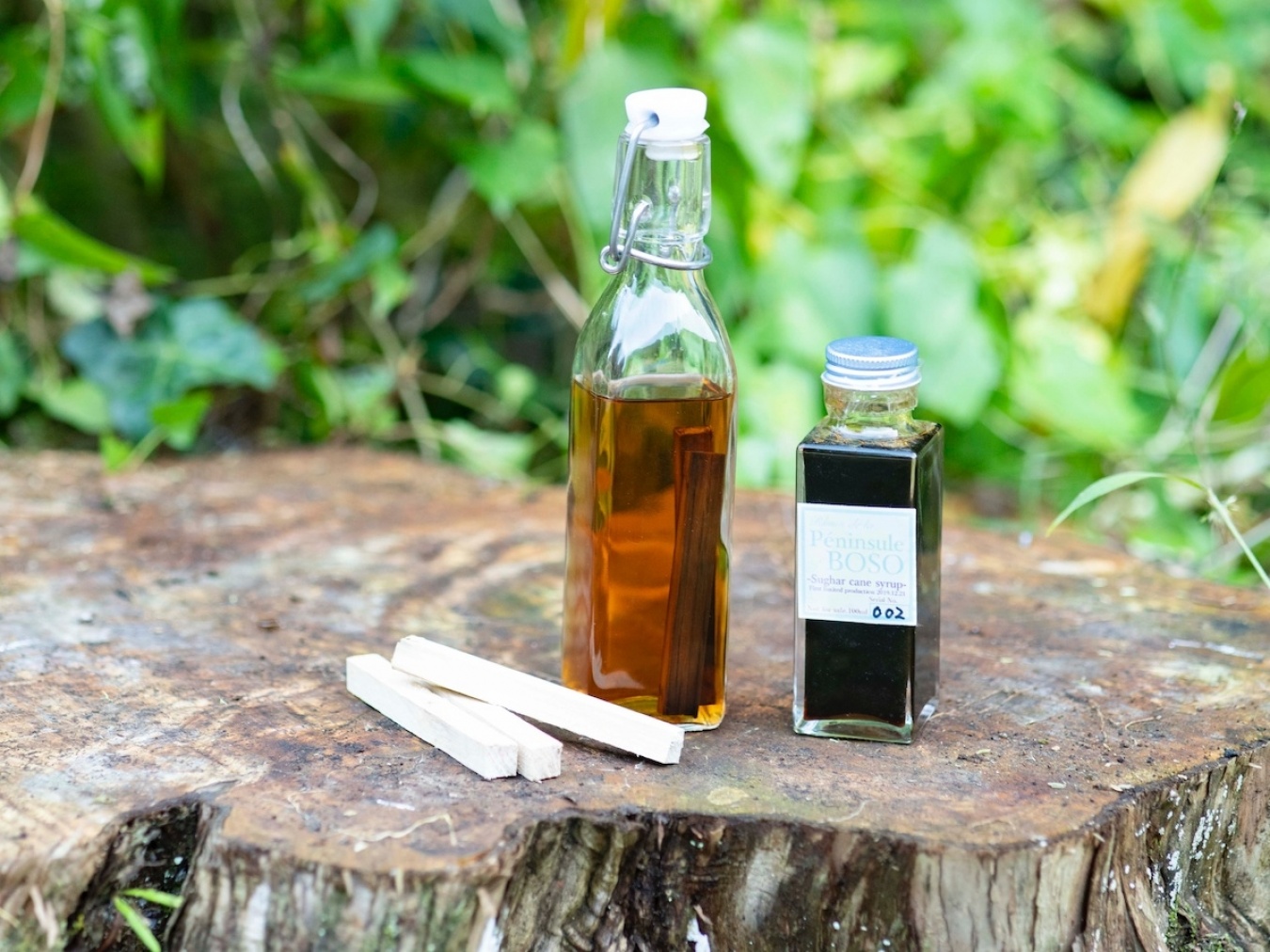
A bottle of soaked, charred yerba matebasi wood chips (left).When distributed to bar staff, the sweet aroma, reminiscent of vanilla and maple, was well received.
Brown sugar is not used!A taste that sets it apart from conventional Japanese rum.
Special waste molasses obtained through a special route is also used for this industrial.
Mr Ebisawa (Chairman of the Japan Rum Association), who has been advising us since the early days of production, has endorsed it, saying: 'It has a strong and interesting aroma for an industrial.'
In Industrial, we try adding sugarcane leaves and bagasse to the tanks during the mash fermentation.
The yeast on the leaves is used to ripen the beer, and this process seems to be able to give it a unique aroma and flavour.
We have made some very interesting sake through trial and error, such as changing the type of yeast and the timing of the introduction of the yeast.
Many Japanese rums are somewhat brown sugar shochu-like, or have a hint of koji malt, but the "Boso Oi Kura Distillery" is a new wave distillery that is traditionally used, and is a new distillery.Many Japanese rums are somewhat brown sugar shochu-like or have malted rice nuances, but the Boso Oigura Distillery is a latecomer to the new wave, so they have a policy of not using any brown sugar at all, which is traditionally used.
Personally, he says that his aim is to produce the "pioneer of matured agricole rum", J.BALLY's Ambre.
He wants to create something that is excellent both straight and as a base for cocktails, and that makes it easy for people to taste agricole.
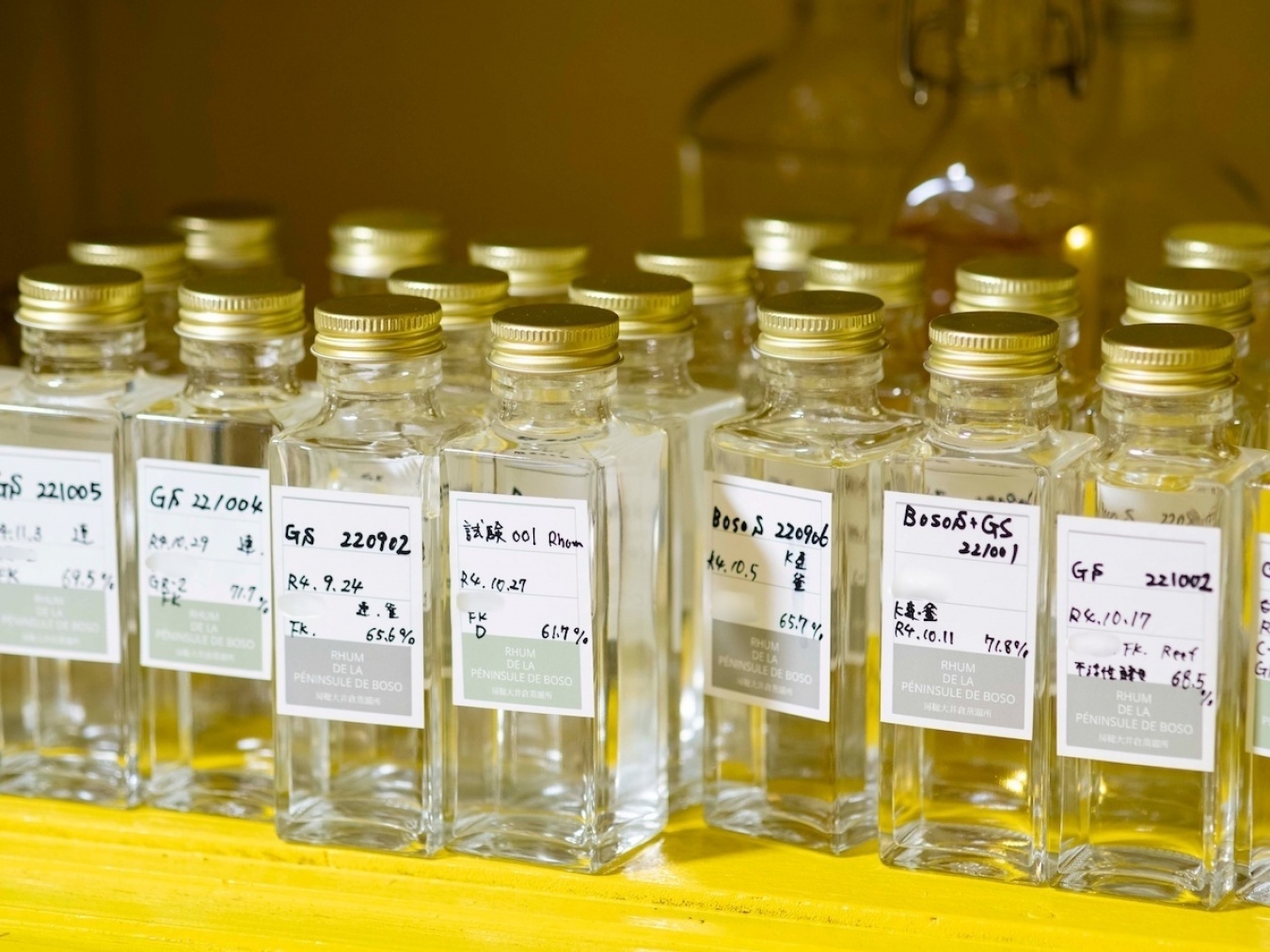
Repeated test distillation and batting.
The local yerba matebashi oak barrels are responsible for the conservation of the satoyama.
'We want to try different things when it comes to ageing.
Our main focus is on bourbon barrels, but we are also thinking of making smaller barrels out of local native yew trees and using them for finishing.
The yerba matebashi is a member of the beech family, the same as the oak used to make Western-style barrels.
We sample the surface-charred pieces of yerba mate to bar staff and have them soak them in alcohol, which is highly appreciated for the mellow aroma reminiscent of vanilla, maple and chocolate that emerges.
During the war, these were planted in Minami Boso as material for firewood, but now that firewood has become obsolete, it is causing mountain devastation.
By utilising this thinned wood, we may be able to contribute to the conservation of the satoyama.
Ramu growing sugar cane on abandoned land and protecting the satoyama environment could be a catalyst for revitalising the local economy....... BOSO rum has such potential.
In the second part, we visit Mr Aoki's sugar cane fields!
Continued in Part 2.
SHOP INFORMATION
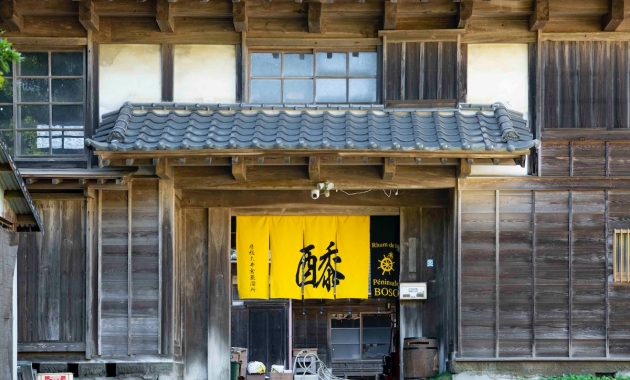
|
 |
|---|---|
| Boso Oikura Distillery 房総大井倉蒸溜所 |
|
|
1019 Minami-asai, Chikura-cho, Minami-Boso-shi, Chiba URL:https://rhumboso.com |
- Drink Planet >
- PICK UP >
- The closest rum distillery to the city centre.
Distilling finally begins!
< Part 1>
![[Drink Planet] Cocktail portal site for bartenders](/img/common/logo.png)
![[Drink Planet] Cocktail portal site for bartenders](/img/common/logo-l.png)

